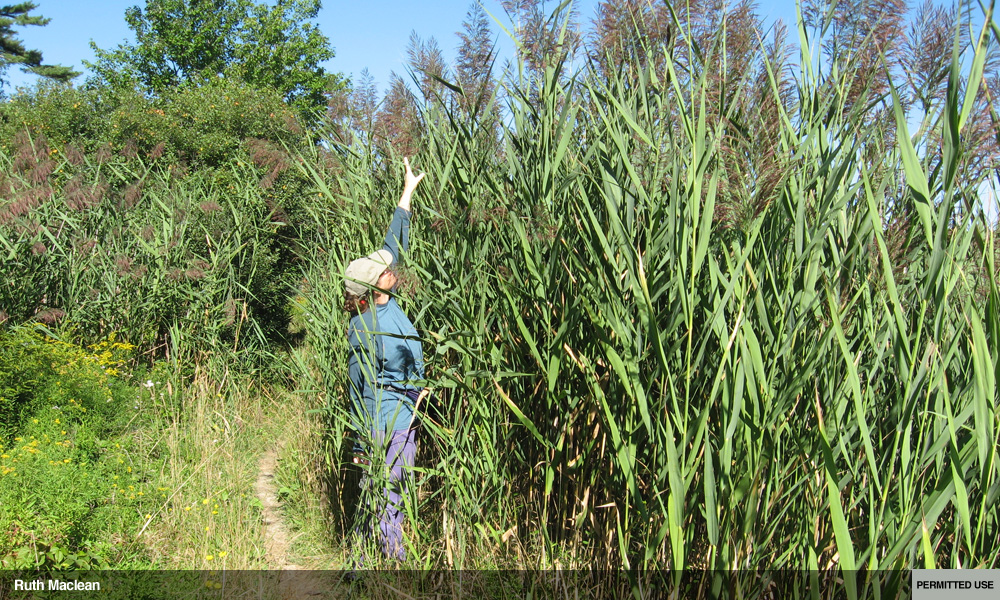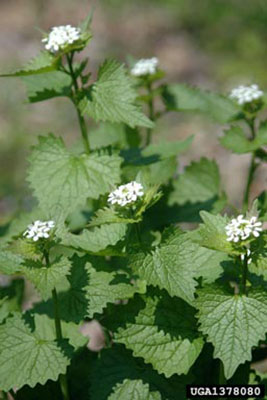Invasive Species
Sylvan Beach is now home to many different invasive species that residents and the Board are working to keep under control. Invasive species are, in general, plants, animals and pathogens that inhabit water or land to which they are not native and the introduction of which does or is likely to cause economic or environmental harm or threaten human health. This definition recognizes that only a small number of non-native species are what are termed “invasive” and actually cause harm. Once introduced and established in an area, the are extremely difficult to control or eradicate.
This section highlights a few of the worst offenders and what we are doing about them. Click on the links for more information on Sylvan Beach.

Phragmites creates tall (more than 15 feet), dense stands that degrade wetlands and coastal areas by crowding out native plants and animals, blocking shoreline views, reducing access for swimming, fishing, and hunting and can create fire hazards from dry plant material.
Oak Wilt – Oak Wilt is a major disease of oaks in Michigan, and the most serious threat in our area. It affects mostly red oaks (what we have); white oaks seem to have some natural resistance to it. It is caused by a fungus that invades the vascular system of the tree, basically shutting it down. The disease is spread by open wounds, like those caused by pruning, through interlocking root systems, and by insects such as the common picnic beetle, which are attracted to the fungus and to the sap of an open wound. They become covered with spores, which they will then carry to and infect healthy trees, often entering by way of an open wound.
There is no cure for oak wilt disease. Arborists recommend that oak trees not be pruned from early April through October. Any wound caused by pruning at any time should be immediately painted over with commercial tree paint. An infected tree should be removed as soon as possible to prevent the fungus from spreading to other trees.
At the present time, while there is oak wilt in the area, there seems to be none at Sylvan Beach. If you have an oak on your leasehold and notice unusual wilting let us know. Leaf symptoms generally are evident in July. As far as pruning goes, there should be no oak pruning at Sylvan Beach between the middle of April and the middle of October. If pruning must be done because of a safety concern, the pruning should be minimal and immediately painted over.

Garlic Mustard impairs watersheds by altering forest composition and understory growth of the forest. Garlic Mustard can control the nutrient supply in soil making it difficult for tree seedlings to germinate. It is also toxic to the larvae of some butterflies, which results in a reduction of plant pollination. Garlic Mustard is most easily removed in the early spring when they have a small white bloom on a 2-3 foot stalk. The stalks should be placed in a plastic bag, sealed and then disposed.
The Hemlock Wooly Adelgid (HWA) is an invasive nonnative insect, which likes hemlocks. It is currently in Muskegon County, but has not affected Sylvan Beach as of yet. They are seen as little white clusters at the base of hemlock needles, where the needles attach to the woody stems. As they feed, they secrete a white waxy coat, which protects them and their eggs. The tell tale white is most evident from late fall to early summer, especially on the underside of shoots. Trees generally last 4-10 years once infected. Hemlocks can be treated with synthetic insecticides. We don’t have many hemlocks at Sylvan Beach, and as near as we can tell the ones we have are not infected. If you have a hemlock on your leasehold however, keep and eye on it. The hemlocks we have are generally quite tall, and this make diagnosis difficult. A pair of binoculars helps.
Beach Bark – We have many large beach trees at Sylvan, generally on the north end of the beach. Many of these are infected with beech bark disease. This is caused by a tiny white scale insect, which will get through the protective bark, creating an open wound. The wound will then attract a fungus, which will eventually girdle the tree and kill it. In appearance the beech bark scale looks like vertical lines of white powder on the trunk, and it is very easy to spot. Beech trees can live with the scale for a number of years, but not with the fungus, which follows the scale; once the fungus sets in the tree will die in a few years. There is a treatment, which consists of applying an insecticide under high pressure to the entire tree. The high pressure knocks the scale loose, and the insecticide penetrates the tree systemically, helping it resist further infestations. It is not a guaranteed treatment, but does seem to be reasonably effective. Treating the tree consists of spraying the tree twice in the spring, at a total cost of $200 per tree.